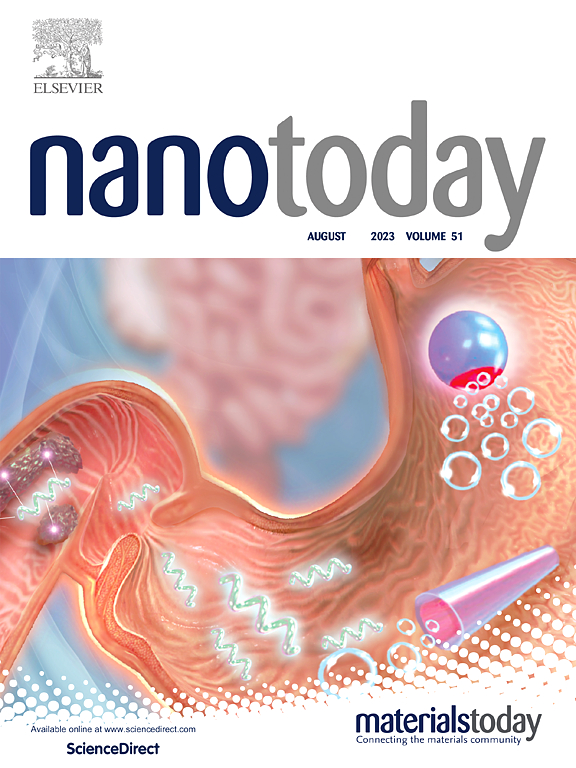Lenalidomide-utilizing self-assembled immunogenic cell death-inducing heparin/doxorubicin nanocomplex for anticancer immunotherapy
IF 13.2
1区 材料科学
Q1 CHEMISTRY, MULTIDISCIPLINARY
引用次数: 0
Abstract
Lenalidomide (LEN), a thalidomide analogue widely used in the treatment of multiple myeloma, has had limited application in other cancer therapies due to challenges such as its immune-based cytotoxic limitations, low efficacy in solid tumors, and the risk of thrombosis. To overcome these hurdles, we developed a novel self-assembling immunogenic nanocomplex that combines lenalidomide with unfractionated heparin (UFH), a highly negatively charged anticoagulant, and doxorubicin (DOX), a potent cytotoxic agent. The nanocomplex is formed through charge-charge and hydrophobic interactions, resulting in a self-assembled UFH/DOX/LEN complex (HepDL) that generates nanoparticles approximately 140 nm in size in saline. Molecular dynamics (MD) simulations confirmed the formation process of the HepDL nanocomplex. These carrier-free, drug-only nanoparticles induce immunogenic cell death (ICD) by releasing DOX in a controlled manner, thereby activating CD8+ T cells, natural killer (NK) cells, natural killer T (NKT) cells, and dendritic cells (DCs). This leads to enhanced anti-tumor efficacy in the CT26.CL25 tumor model, demonstrating a robust immune-boosting effect. This study presents a significant advancement in the development of immunogenic nanoparticles incorporating lenalidomide for cancer treatment.
求助全文
约1分钟内获得全文
求助全文
来源期刊

Nano Today
工程技术-材料科学:综合
CiteScore
21.50
自引率
3.40%
发文量
305
审稿时长
40 days
期刊介绍:
Nano Today is a journal dedicated to publishing influential and innovative work in the field of nanoscience and technology. It covers a wide range of subject areas including biomaterials, materials chemistry, materials science, chemistry, bioengineering, biochemistry, genetics and molecular biology, engineering, and nanotechnology. The journal considers articles that inform readers about the latest research, breakthroughs, and topical issues in these fields. It provides comprehensive coverage through a mixture of peer-reviewed articles, research news, and information on key developments. Nano Today is abstracted and indexed in Science Citation Index, Ei Compendex, Embase, Scopus, and INSPEC.
 求助内容:
求助内容: 应助结果提醒方式:
应助结果提醒方式:


